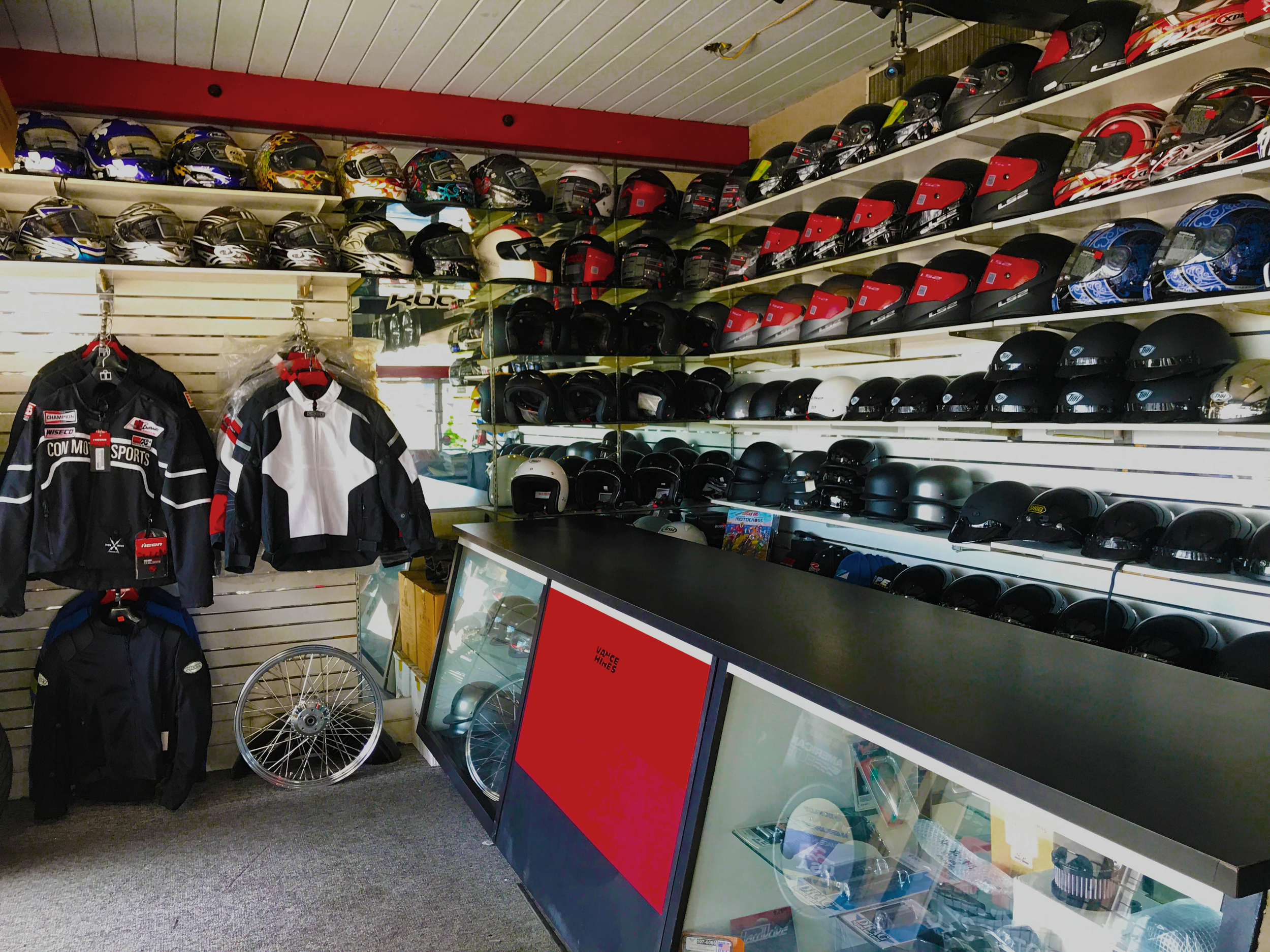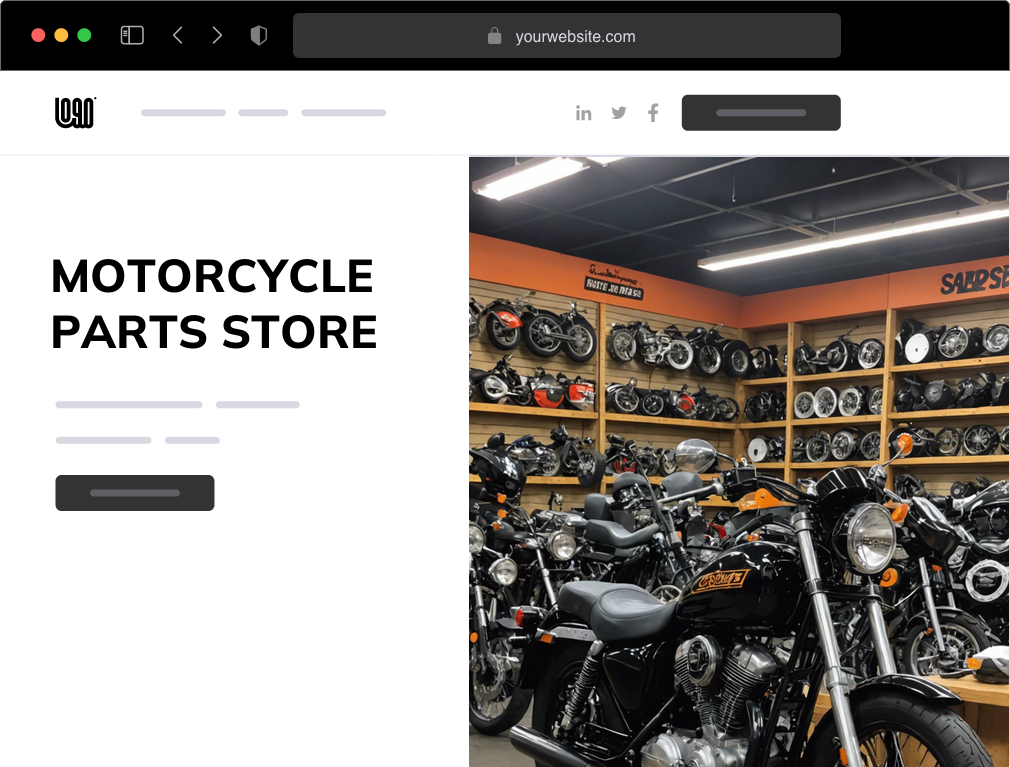Discover Affordable Prices on Motocross Parts NZ for every single Bike
Discover Affordable Prices on Motocross Parts NZ for every single Bike
Blog Article
Recognizing the Important Parts of a Bike: A Comprehensive Guide for Lovers
For motorcycle lovers looking to boost their riding experience and guarantee their bikes run efficiently, recognizing the important elements of a motorcycle is critical. Each element, from the engine's intricate workings to the important function of the braking systems, not only affects efficiency however also safety and security and convenience.
Engine Components

The camshaft plays a critical duty in regulating the timing of the engine's valves, making sure the precise opening and closing needed for effective gas and air intake, in addition to exhaust expulsion. This timing is critical to keeping optimal engine efficiency and performance. Furthermore, the carburetor or fuel shot system, relying on the motorbike version, is accountable for mixing air with fuel in the right proportion for combustion.
The cooling system, either air or liquid-based, works to keep the engine's temperature level within functional limitations, preventing overheating and guaranteeing long life - motorbike shop. Each element, thoroughly created and incorporated, contributes to the seamless operation of the engine, defining the bike's power output and total performance
Transmission System
Indispensable to the bike's functionality, the transmission system makes certain effective power transfer from the engine to the wheels. This system comprises several essential elements, consisting of the clutch, gearbox, and final drive, each playing an essential role in converting the engine's power into activity. The clutch, normally run by a hand bar, offers to involve and disengage the engine from the transmission, permitting for smooth equipment modifications and regulated acceleration.
The transmission, commonly described as the transmission correct, contains a collection of gears that bikers can manually change via to readjust the bike's rate and torque output. These gears are organized in a sequence that enables the motorbike to speed up efficiently and maintain optimum engine efficiency throughout various rates. The majority of motorbikes utilize a sequential gearbox, requiring the biker to shift gears in a fixed order.
Braking Devices
While comprehending the transmission system is key to taking advantage of a bike's power, similarly crucial is the capability to control and quit that power effectively, which is where braking systems come into play. Brakes are vital for security and efficiency, providing the motorcyclist with the necessary control to browse various terrains and conditions. Generally, motorbikes feature 2 kinds of stopping systems: disc brakes and drum brakes.
Disc brakes are a lot more widespread in modern motorcycles due to their premium performance. This system offers much better heat dissipation, regular performance, and boosted quiting power, specifically in wet problems.
Alternatively, drum brakes, though much less common, are still located in some motorcycles. They function by pressing brake footwear against the internal surface of a drum affixed to the wheel. While usually less reliable in heat dissipation and quiting power, drum brakes are easier and a lot more affordable.
Comprehending these braking systems' nuances enables motorcyclists to preserve their bikes properly and appreciate the engineering that guarantees risk-free and effective stopping.
Suspension and Guiding
Suspension and guiding systems are vital elements that dramatically affect a bike's handling and adventure convenience. The shock absorber, including forks at the front and shock absorbers at the rear, absorbs roadway irregularities, improving stability and control. Front dig this forks, generally telescopic or inverted, compress and rebound to minimize influences, while rear shock absorbers keep tire contact with the roadway, crucial for traction and safety.
Steering, centered around the handlebars, connects the cyclist to the bike's directional control. The steering head bearings ensure smooth procedure, permitting accurate ability to move. Proper alignment and upkeep of these bearings are essential for predictable guiding action and reducing rider tiredness.
The suspension's adjustability is an additional critical facet; preload, damping, and rebound setups permit customization to match different riding styles and conditions. This adaptability is essential for enhancing efficiency, whether browsing city streets or dealing with tough routes. Advancements like electronic suspension systems supply real-time adjustments, boosting adventure quality throughout diverse surfaces.

Electrical Solutions
After making certain a smooth and regulated ride through efficient suspension and steering systems, interest transforms to the electric systems, a pivotal aspect of modern motorbikes. These systems play a vital duty not only in beginning the engine however also in powering motorcycle battery various components that boost the performance and safety and security of the bike.
At the heart of a motorcycle's electrical system is the battery, which stores electrical energy needed for beginning the engine and powering supporting systems - motorbike shop. The alternator or generator, combined index with the rectifier-regulator, makes certain the battery continues to be charged while the motorcycle is in operation, converting power into electric energy and keeping voltage levels
The ignition system, one more crucial part, is in charge of firing up the air-fuel blend in the engine's cylinders. Modern bikes usually make use of a digital ignition system, supplying greater performance and integrity compared to conventional systems.
Illumination systems, consisting of fronts lights, tail lights, and signs, are likewise important, guaranteeing exposure and security for the motorcyclist. Additional electronic parts such as sensors, control systems, and presents add to advanced attributes like fuel shot administration, anti-lock stopping systems (ABDOMINAL), and digital control panels, better enhancing the riding experience.
Verdict
An extensive understanding of a motorcycle's necessary parts, including the engine, transmission system, stopping devices, suspension, guiding, and electrical systems, is crucial for fanatics aiming to enhance comfort, safety and security, and efficiency. Proficiency of these components allows for educated choices concerning upkeep and upgrades, ultimately improving the riding experience. By incorporating this understanding, bikers can guarantee their motorbikes run at peak performance and integrity, thus maximizing both satisfaction and long life of their cars.
For bike enthusiasts looking to elevate their riding experience and guarantee their bikes run efficiently, understanding the important components of a bike is extremely important.Indispensable to the motorbike's functionality, the transmission system guarantees effective power transfer from the engine to the wheels.While understanding the transmission system is key to taking advantage of a motorbike's power, similarly essential is the capacity to manage and quit that power efficiently, which is where stopping systems come right into play. Typically, bikes include 2 kinds of braking systems: disc brakes and drum brakes.
A comprehensive understanding of a bike's necessary elements, including the engine, transmission system, braking mechanisms, suspension, guiding, and electric systems, is indispensable for fanatics aiming to maximize performance, comfort, and safety.
Report this page